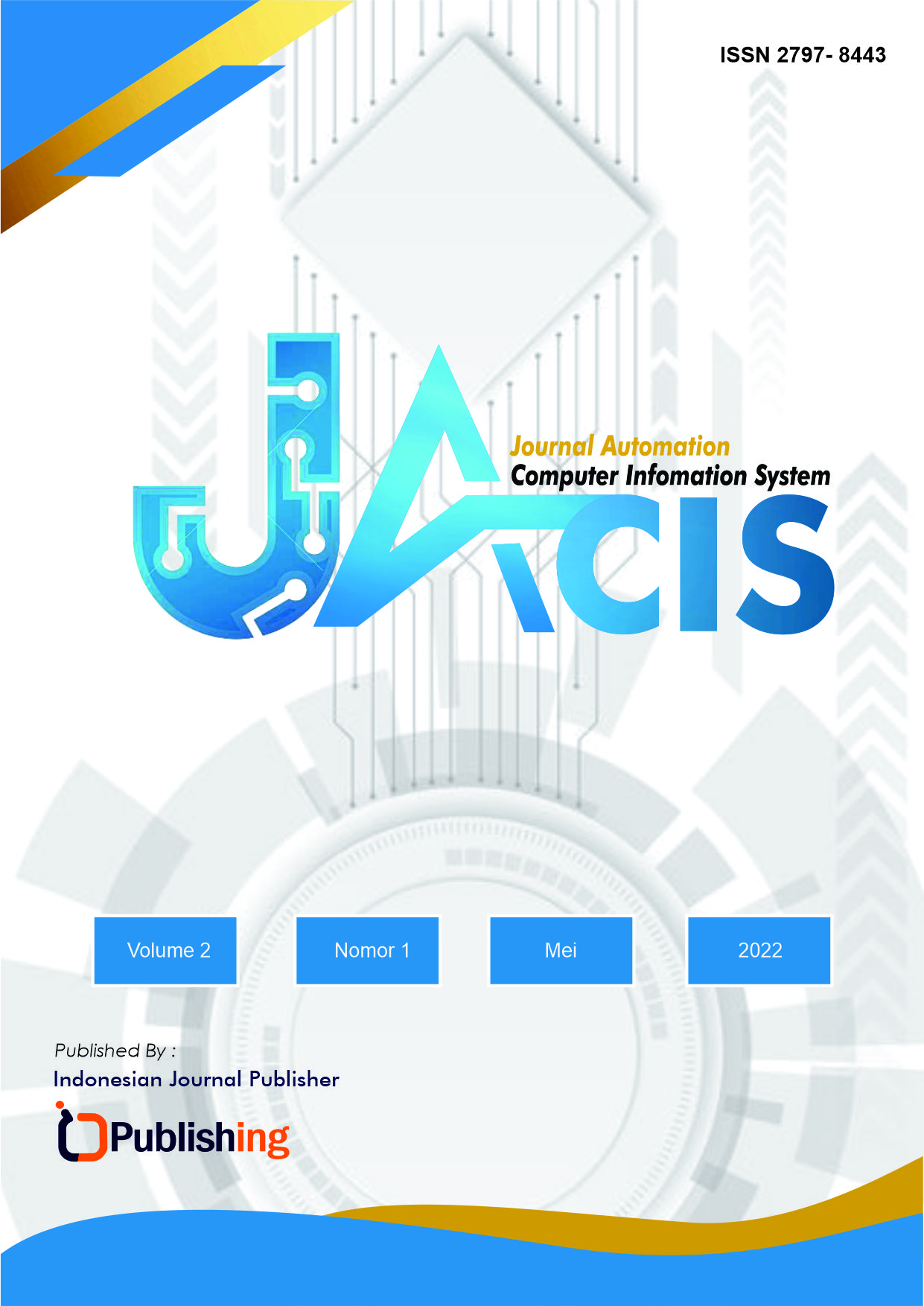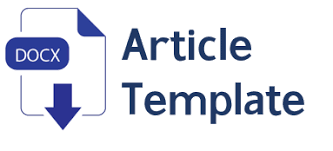Optimasi Naïve Bayes Dengan Particle Swarm Optimization Untuk Analisis Sentimen Formula E-Jakarta
DOI:
https://doi.org/10.47134/jacis.v2i1.35Keywords:
Naïve Bayes, Particle Swarm Optimization, Analisis Sentimen, Formula E-JakartaAbstract
Kota Jakarta berencana menyelenggarakan ajang balap Formula E untuk mempromosikan mobil listrik sebagai kendaraan masa depan. Pandemi Covid-19 yang melanda Jakarta membuat rencana tersebut harus ditunda. Penundaan tersebut menimbulkan polemik di masyarakat pada media sosial dikarenakan kondisi Jakarta yang sedang dilanda pandemi Covid-19 tetapi pemerintah kota Jakarta tetap ingin menyelenggarakan Formula E dengan membayar uang komitmen kepada penyelenggara yang jumlahnya tidak sedikit. Perbedaan pendapat pada media sosial ini dijadikan bahan untuk analisis sentimen menggunakan metode klasifikasi Naive Bayes. Metode Naive Bayes cukup yang memiliki kelemahan terhadap seleksi fitur dilakukan optimasi dengan menerapkan pemilihan fitur Particle Swarm Optimization (PSO). Hasil penerapan optimasi PSO pada metode Naive Bayes menunjukkan adanya peningkatan performa dengan nilai akurasi 89,16%, precision 91,10%, recall 86,81% dan AUC 0,690
References
[2] R. Tanjung, “Instruksi Gubernur DKI Jakarta Tentang Penyelenggaraan Balap Formula E Dalam Tinjauan Siyasah Islam,” Al Ahkam, vol. 17, no. 2, 2021, doi: 10.37035/ajh.v17i2.5263.
[3] B. W. Sari and F. F. Haranto, “Implementasi Support Vector Machine Untuk Analisis Sentimen Pengguna Twitter Terhadap Pelayanan Telkom Dan Biznet,” J. Pilar Nusa Mandiri, vol. 15, no. 2, pp. 171–176, 2019, doi: 10.33480/pilar.v15i2.699.
[4] M. A. Al-Shabi, “Evaluating the performance of the most important Lexicons used to Sentiment analysis and opinions Mining,” Int. J. Comput. Sci. Netw. Secur., vol. 20, no. 1, pp. 51–57, 2020.
[5] S. S. Salim and J. Mayary, “Analisis Sentimen Pengguna Twitter Terhadap Dompet Elektronik Dengan Metode Lexicon Based Dan K – Nearest Neighbor,” J. Ilm. Inform. Komput., vol. 25, no. 1, pp. 1–17, 2020, doi: 10.35760/ik.2020.v25i1.2411.
[6] R. D. Septiana, A. B. Susanto, and T. Tukiyat, “Analisis Sentimen Vaksinasi Covid-19 Pada Twitter Menggunakan Naive Bayes Classifier Dengan Feature Selection Chi-Squared Statistic dan Particle Swarm Optimization,” J. SISKOM-KB (Sistem Komput. dan Kecerdasan Buatan), vol. 5, no. 1, pp. 49–56, 2021, doi: 10.47970/siskom-kb.v5i1.228.
[7] Sh. Fanissa, M. A. Fauzi, and S. Adinugroho, “Analisis Sentimen Pariwisata di Kota Malang Menggunakan Metode Naive Bayes dan Seleksi Fitur Query Expansion Ranking Optimasi Sisa Bahan Baku Pada Industri Mebel Menggunakan Algoritma Genetika View project Automatic Essay Scoring View project,” J. Pengemb. Teknol. Inf. dan Ilmu Komput., vol. 2, no. 8, pp. 2766–2770, 2018.
[8] F. R. S. Rangkuti, M. A. Fauzi, Y. A. Sari, and E. D. L. Sari, “Sentiment Analysis on Movie Reviews Using Ensemble Features and Pearson Correlation Based Feature Selection,” 3rd Int. Conf. Sustain. Inf. Eng. Technol. SIET 2018 - Proc., pp. 88–91, 2018, doi: 10.1109/SIET.2018.8693211.
[9] H. Wang and M. Hong, “Supervised Hebb rule based feature selection for text classification,” Inf. Process. Manag., vol. 56, no. 1, pp. 167–191, 2019, doi: 10.1016/j.ipm.2018.09.004.
[10] F. Pramono, Didi Rosiyadi, and Windu Gata, “Integrasi N-gram, Information Gain, Particle Swarm Optimation di Naïve Bayes untuk Optimasi Sentimen Google Classroom,” J. RESTI (Rekayasa Sist. dan Teknol. Informasi), vol. 3, no. 3, pp. 383–388, 2019, doi: 10.29207/resti.v3i3.1119.
[11] J. Chen, H. Huang, S. Tian, and Y. Qu, “Feature selection for text classification with Naïve Bayes,” Expert Syst. Appl., vol. 36, no. 3 PART 1, pp. 5432–5435, 2009, doi: 10.1016/j.eswa.2008.06.054.
[12] A. P. Giovani, A. Ardiansyah, T. Haryanti, L. Kurniawati, and W. Gata, “Analisis Sentimen Aplikasi Ruang Guru Di Twitter Menggunakan Algoritma Klasifikasi,” J. Teknoinfo, vol. 14, no. 2, p. 115, 2020, doi: 10.33365/jti.v14i2.679.
[13] Ratino, N. Hafidz, S. Anggraeni, and W. Gata, “Sentimen Analisis Informasi Covid-19 menggunakan Support Vector Machine dan Naïve Bayes,” J. JUPITER, vol. 12, no. 2, pp. 1–11, 2020.
[14] D. S. Susilawati and D. Riana, “Optimization the Naive Bayes Classifier Method to diagnose diabetes Mellitus,” IAIC Trans. Sustain. Digit. Innov., vol. 1, no. 1, pp. 78–86, 2021, doi: 10.34306/itsdi.v1i1.21.
[15] S. Khomsah, “Naive Bayes Classifier Optimization on Sentiment Analysis of Hotel Reviews,” J. Penelit. Pos dan Inform., vol. 10, no. 2, p. 157, 2020, doi: 10.17933/jppi.2020.100206.
[16] S. Imran Hossain, M. A. H. Akhand, M. I. R. Shuvo, N. Siddique, and H. Adeli, “Optimization of University Course Scheduling Problem using Particle Swarm Optimization with Selective Search,” Expert Syst. Appl., vol. 127, pp. 9–24, 2019, doi: 10.1016/j.eswa.2019.02.026.
Downloads
Published
How to Cite
Issue
Section
License
Copyright (c) 2022 Hasim Budi Jatmiko, Nanang Tedi Kurniadi, Dony Maulana

This work is licensed under a Creative Commons Attribution 4.0 International License.














